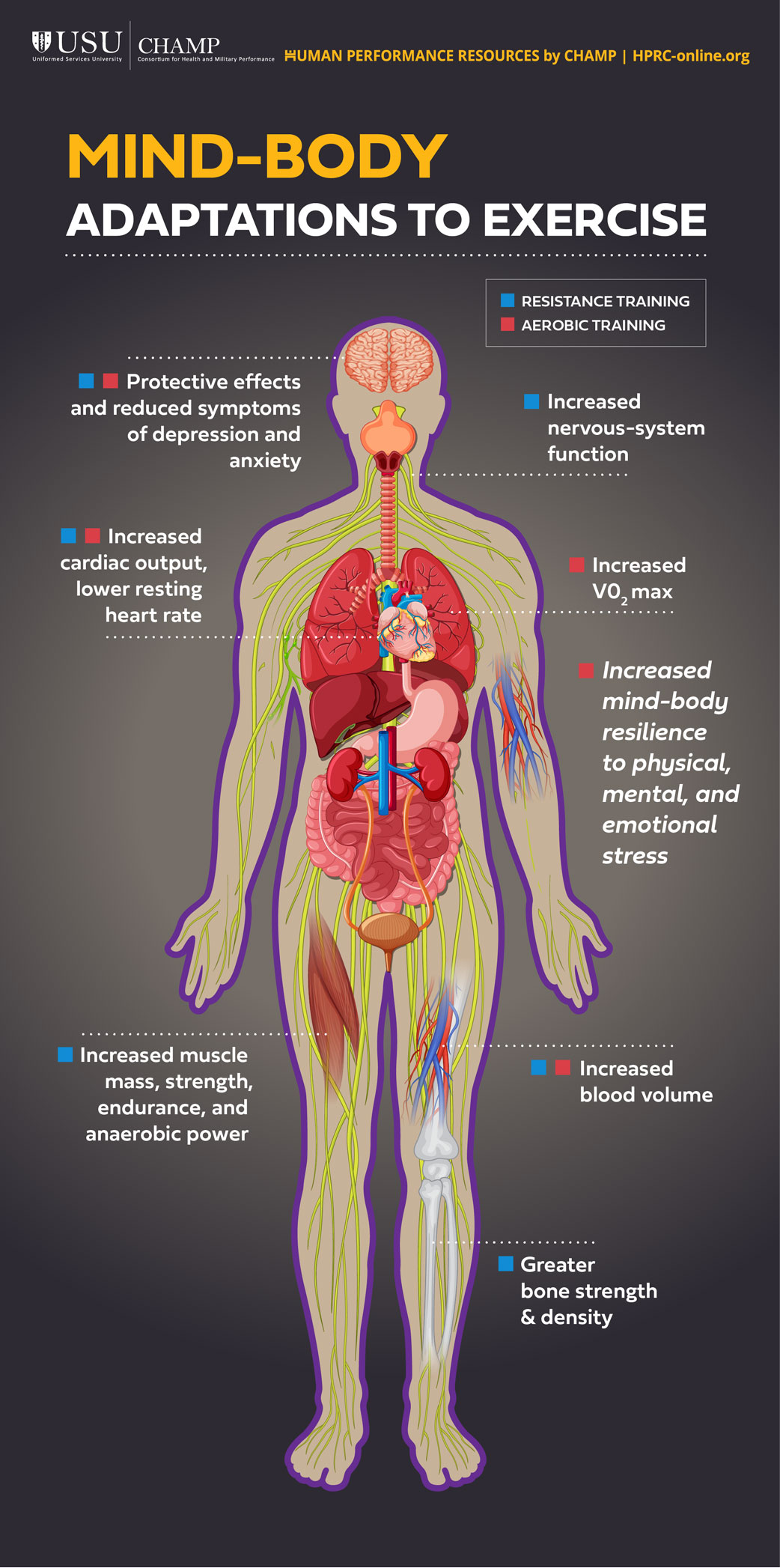When you exercise regularly and meet the physical activity guidelines of 150 minutes per week, your body will undergo several adaptations in your bones, muscles, heart, lungs, and nervous system. This infographic touches on several of the major ones you’ll start to see. The changes you’ll see will vary based on the type of training you do—resistance, aerobic, or both, as indicated by the different-color boxes.

USU (Uniformed Services University) and CHAMP (Consortium for Health and Military Performance) logo; Human Performance Resources by CHAMP (HPRC-online.org).
Mind-Body Adaptations to Exercise
Key: Blue squares indicate results of resistance training and red squares indicate results of aerobic training.
Protective effects and reduced symptoms of depression and anxiety [points to brain; red and blue squares indicate a result of both resistance and aerobic training]
Increased nervous-system function [points to nerves in neck; blue square indicates a result of resistance training]
Increased VO2 max [points to lungs; red square indicates a result of aerobic training]
Increased cardiac output, lower resting heart rate [points to heart; red and blue squares indicate a result of both resistance and aerobic training]
Increased mind-body resilience to physical, mental, and emotional stress [full body; red square indicates a result of aerobic training]
Increased muscle mass, strength, endurance, and anaerobic power [points to leg muscles; blue square indicates a result of resistance training]
Increased blood volume [points to veins and arteries in leg; red and blue squares indicate a result of both resistance and aerobic training]
Greater bone strength & density [points to leg bones; blue square indicates a result of resistance training]
Published on: February 22, 2021
References
Alvar, B. A., Sell, K., & Deuster, P. A. (2017). NSCA's essentials of tactical strength and conditioning. Champaign, IL: Human Kinetics.
Khanzada, F. J., Soomro, N., & Khan, S. Z. (2015). Association of physical exercise on anxiety and depression amongst adults. Journal of the College of Physicians and Surgeons Pakistan, 25(7), 546–548.
Schuch, F. B., Vancampfort, D., Richards, J., Rosenbaum, S., Ward, P. B., & Stubbs, B. (2016). Exercise as a treatment for depression: A meta-analysis adjusting for publication bias. Journal of Psychiatric Research, 77, 42–51. doi:10.1016/j.jpsychires.2016.02.023
U.S. Department of Health and Human Services. (2018). Physical activity guidelines for Americans. Washington, DC: U.S. Department of Health and Human Services. Retrieved from https://health.gov/paguidelines/second-edition/pdf/Physical_Activity_Guidelines_2nd_edition.pdf
